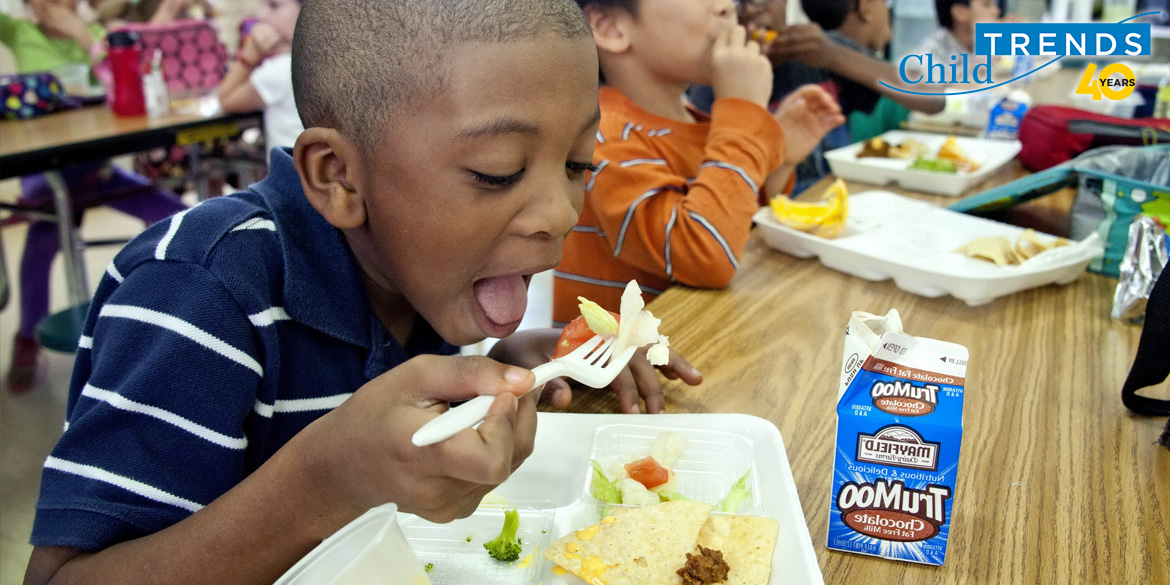Schools increasingly recognize the importance of addressing the needs of the whole child, including a focus on social and emotional learning (SEL). And one good place to find opportunities to support SEL among students may, in fact, be during school breakfast.
Child Trends recently collaborated with the Partners for Breakfast in the Classroom to examine the experiences of three school districts in implementing breakfast in the classroom (BIC) as a strategy to reduce the number of students who start their school day hungry. As part of this work, we talked with parents and school staff members who affirmed the importance of ensuring that all students are able to eat breakfast. The conversations touched on some benefits of BIC that we expected to hear, such as reducing the stigma around eating school-provided breakfast and providing opportunities to teach students about healthy nutrition. However, one of the most common themes—one we had not anticipated—was the social and emotional benefits of having breakfast in the classroom and the value of having a more nurturing start to the school day.
Educators also mentioned opportunities for students to take on age-appropriate responsibilities related to breakfast distribution and clean-up that promoted a sense of community. School staff working with younger students highlighted opportunities for students to learn to manage their frustration and experience a sense of pride as they opened milk containers or successfully cleaned up a spill. These small wins created opportunities for school staff and fellow students to praise students’ efforts and persistence.
School staff described a number of opportunities to support SEL, most of which don’t require extensive time or resources. In fact, strategies like assigning responsibilities to students for distribution and clean-up may actually save time for school staff. While other strategies, like modeling care and empathy through informal conversations over breakfast, did involve some staff time, they mostly just required an intentional effort to think about how their interactions were supporting the social and emotional development of their students.
The lessons learned from the schools in these three school districts serve as a reminder that efforts to support the whole learner are naturally interconnected. In fact, the benefits that parents and school staff identified align with the SEL competencies identified by CASEL (Collaborative for Academic, Social, and Emotional Learning), which are critical to support student social, emotional, and academic development. Schools may be missing opportunities to better support students when they don’t take the time to be intentional about making connections across the various components of the SEL model. Engaging everyone in the school in such efforts—including educational support professionals like school nutrition staff—can result in better integration and a greater sense of community.
For more information on successes and challenges in implementing BIC, check out the full report.
Reprinted with permission from Child Trends.



